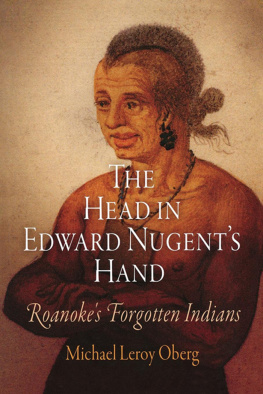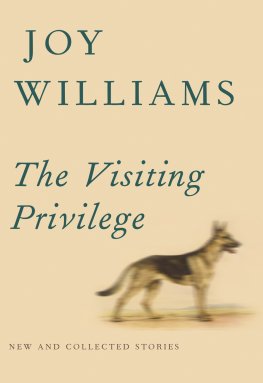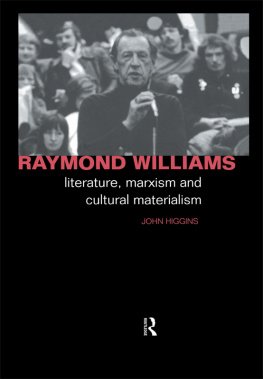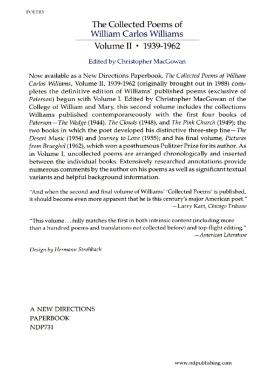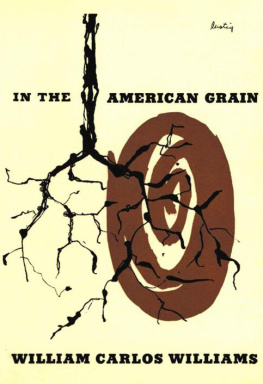Professional Indian
EARLY AMERICAN STUDIES
Series editors:
Daniel K. Richter, Kathleen M. Brown,
Max Cavitch, and David Waldstreicher
Exploring neglected aspects of our colonial, revolutionary, and early national history and culture, Early American Studies reinterprets familiar themes and events in fresh ways. Interdisciplinary in character, and with a special emphasis on the period from about 1600 to 1850, the series is published in partnership with the McNeil Center for Early American Studies.
A complete list of books in the series
is available from the publisher.
PROFESSIONAL
INDIAN

The American Odyssey of Eleazer Williams
Michael Leroy Oberg

Copyright 2015 University of Pennsylvania Press
All rights reserved.
Except for brief quotations used for purposes of review or scholarly citation,
none of this book may be reproduced in any form by any means
without written permission from the publisher.
Published by
University of Pennsylvania Press
Philadelphia, Pennsylvania 19104-4112
www.upenn.edu/pennpress
Printed in the United States of America
on acid-free paper
1 3 5 7 9 10 8 6 4 2
Library of Congress Cataloging-in-Publication Data
Oberg, Michael Leroy.
Professional Indian : the American odyssey of Eleazer Williams / Michael Leroy Oberg. 1st ed.
p. cm. (Early American studies)
Includes Bibliographical references and index.
ISBN 978-0-8122-4676-6 (hardcover : alk. paper)
1. Williams, Eleazer, 17871858. 2. Mohawk IndiansBiography 3. MissionariesCanadaBiography. 4. MissionariesUnited StatesBiography. 5. Indians of North AmericaKings and rulersQubecKahnawakeBiography. 6. Indians of North AmericaMissionsHistory19th century. 7. Indians, Treatment ofNorth AmericaHistory19th century. 8. North AmericaEthnic relationsHistory19th century. I. Title. II. Series: Early American Studies.
E99.M8O14 2015
974.7004'975542092dc23
2014028285
Albie Burke
CONTENTS

PREFACE

This book is about Eleazer Williams, a descendant of an unredeemed Puritan captive carried away to the Catholic Mohawk town of Kahnawake early in the eighteenth century, a Mohawk missionary to the Oneida Indians in central New York and Wisconsin, and an active supporter of the effort beginning early in the nineteenth century to remove eastern Indians to new homes in the American West. It is also about the many worlds of the nineteenth-century Iroquois that Williams traversed during his long public career, from the pressed-upon Indian towns in New York and Wisconsin to the centers of Anglo-American power in Albany, New York City, and Washington. It tells the story of the Iroquois in an era of culture change, dispossession, and relocation. By following Eleazer Williams on his American odyssey, it also presents a story of identity, of self-fashioning, in Indian America in the decades between the American Revolution and the Civil War, and the varied roles Indians might play in the white mans republic. It is, finally, a story about getting by and making do, and the struggles one important, if underappreciated, native leader confronted as he attempted to do so.
There is a revealing anecdote about Williams. According to Albert Gallatin Ellis, who worked with him at the Oneida mission in New York beginning in 1820, and who continued to cross paths with him over the years that followed, Williams once looked into a mirror hanging on the wall at the mission station. Still early in his career, Williams studied closely his own reflection, and wondered aloud is this the face of a savage and if, in time... the Indian or the white man prevails in this face.
Its an image I like very much. Who might Williams be, and who would decide? If we accept the accuracy of Elliss recollection, it seems that Williams himself was uncertain. Over the course of writing this book, I have often wondered what Williams was like when he was alone, with no audience watching him. It is easy to tell what he did with his time, where he went. He left a clearly marked paper trail. But Williams described more fully the events in which he participated than the sentiments he felt. There is much about Williams that I wish I knew and, indeed, I wish I knew him better. I wonder what he thought of himself. When Williams looked in the mirror, what did he see?
This book is an attempt to answer these questions. Williams saw himself as a Christian. That is certain. He saw himself as a messenger of Gods word who long toiled with little reward in the mission field. Did he see, too, a tireless advocate who helped the New York Indians establish themselves in new homes in Wisconsin beginning early in the 1820s, or a veteran of Americas second war for independence, or, toward the end of his life, a claimant to the throne of France? He performed all these roles, as well. Williams thus might have seen many things as he examined his reflection. But did he see his imperfections? Did he reflect on his failings? I think so, but answering these sorts of questions is not an easy thing for a historian to do.
We all make choices about how we present ourselves to the world. To some extent, we all play roles. We might conform to or challenge at times the expectations that come with these roles. Eleazer Williams clearly made choices. He played roles. On occasion, he created characters for himself, with elaborate backstories and complex plots. He told tales as he sold his services. But as an Iroquois Christian living in white America, he found himself confronted by a variety of forces that starkly limited the options available to him. As an Indian, or a person of mixed race, or a European; as a preacher, a broker, or a kingall identities he claimedEleazer Williams found himself staring down the expectations held by the varied audiences before whom he appeared. Williams struggled not to disappoint. His livelihood depended on it. And if Eleazer Williams was almost never all that he claimed for himself, he always was more than he seemed.
PROLOGUE

On the Northern Line
The Reverend John Holloway Hanson boarded the Northern, or Ogdensburg, Railroad in the autumn of 1851. Leaving for good his home way up in St. Lawrence County, Hanson planned on attending the Episcopal Diocesan Convention in New York City before beginning his next assignment as a missionary chaplain at Calvary Chapel, spreading the word of God to Protestant immigrants in the spiritual wilds of Lower Manhattan. Hanson did not look forward to his new job, and he left northern New York with many regrets.
Since 1846 Hanson had served as rector at St. Pauls Episcopal Church in Waddington, a beautiful village along the banks of the St. Lawrence. Among the founders of the church had been land speculator David A. Ogden, he who had played so large a role in attempts to remove New Yorks native peoples to new homes in the West. Many of the persons of intelligence and refinement in the congregation loved Hanson, his sister later wrote, but love clearly had its limits. By 1851 the church seemed to have entered a period of decline; several of the wealthiest and most influential congregants moved away or died. David Ogden passed on well before Hanson arrived in Waddington, and the widow Ogden, who had done more than anyone else to support St. Pauls and its rector, sensed that she, too, was not long for this world. She advised the clergyman she had loved as a son, Hansons sister recalled, to seek another field of labor.
Next page

